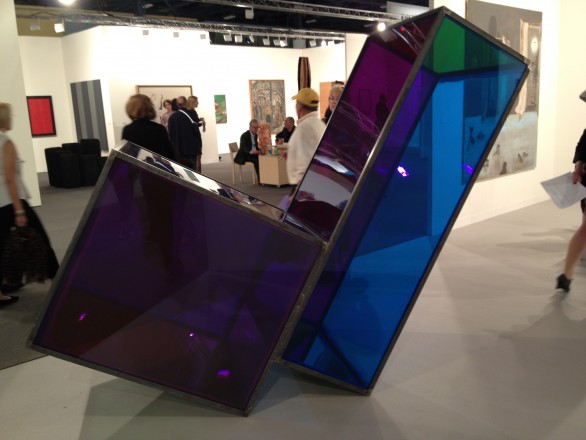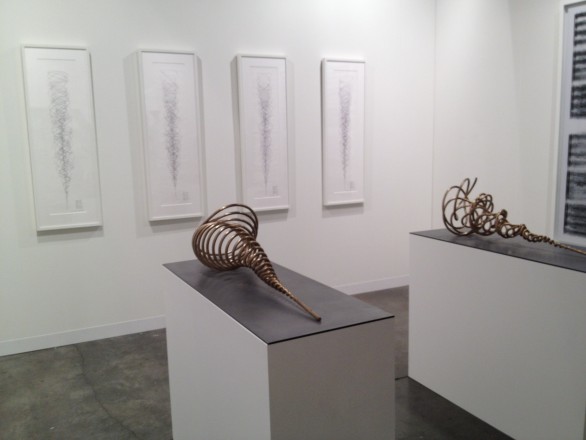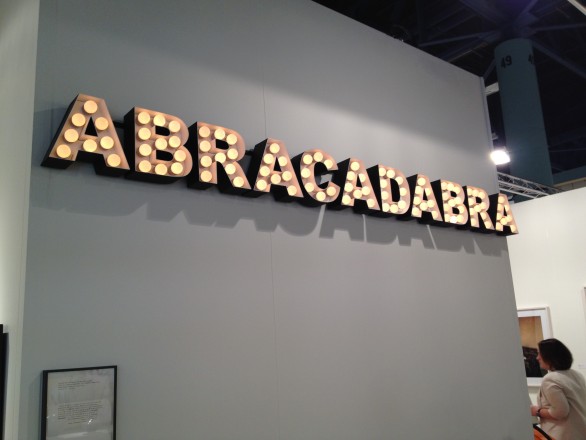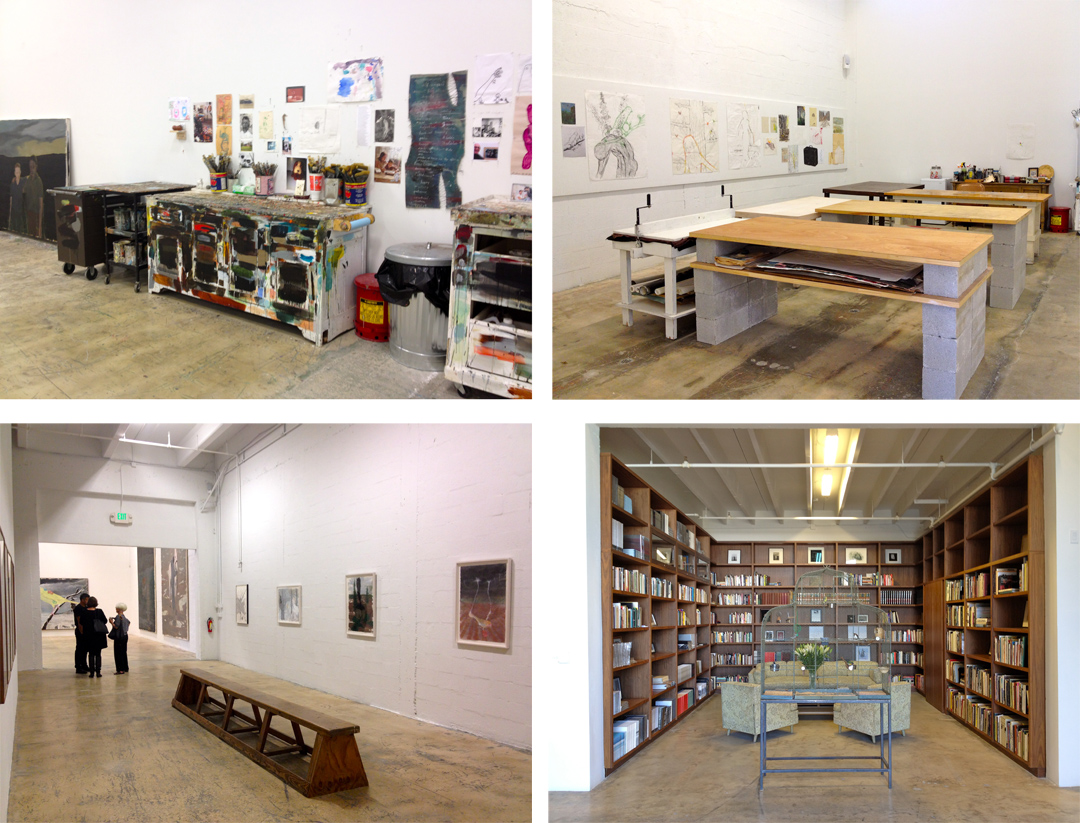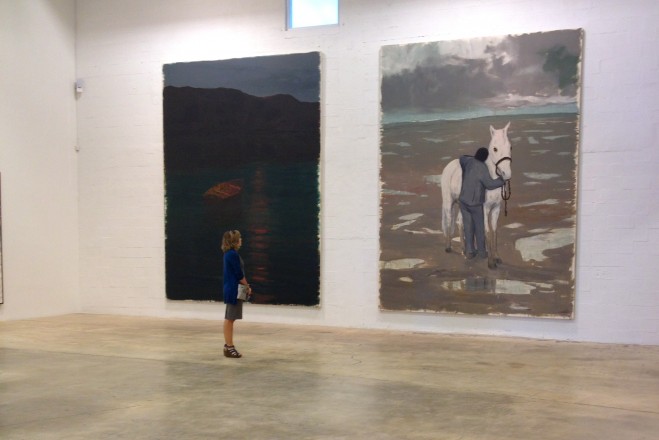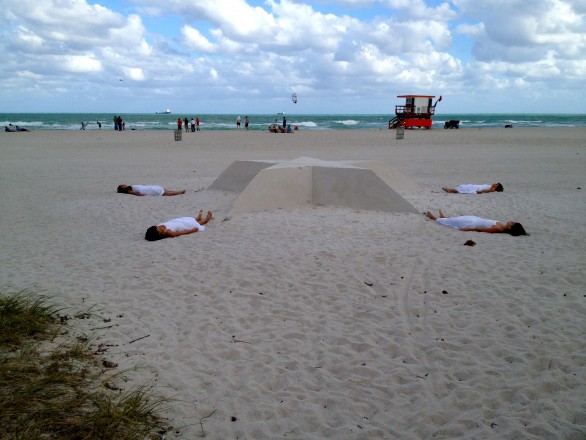This year marked the 10th Anniversary of Art Basel Miami Beach, one of the most important art fairs in the United States. Along with Art Basel, there are about 16 other art fairs that happen at the same time. Artsource Consulting was in Miami for the fairs and found promising work at the NADA, Pulse, Aqua and Art Basel fairs. Here are some highlights:
Sculptural works at Art Basel
Sarah Braman’s formalist assemblages combine sections of a scavenged materials with tinted Plexiglas, to make work that is not only formalist but contains a social element.
Conrad Shawcross seeks to visually represent the mathematics of sound. The artist devised a machine, adapted from the harmonograph: an instrument popularised in Victorian times consisting of two adjustable pendulums swinging at right angles to one another. Rather than using a fixed drawing surface, he pulls a scroll of paper across the swinging plate to create a long oscillation that tapers away as the motion of the pendulums decreases. The bronze sculptures take this same principle into three dimensions, rendering sound in sculptural form.
Peter Liversidge typed and framed the description of his piece that hangs below the sculpture in the gallery booth: “I propose to install a single sign within booth A17 at Art Basel Miami Beach. The sign would be installed above head height. The sign would have the ability to be on 24 hours a day, 365 days a year. The letters would be formed by lines of bulbs, which would be no more than 25 watt, the bulbs would read: ABRACADABRA. Abracadabra in it’s dictionary definition is given as: a spoken formula, used esp. by conjurors. Latin/Aramaic; Abra – ‘to create’ Cadabra – ‘as I say. Trans/: Abracadabra; ‘create as I say’.”
During the fairs, artists open their studios for visitors. Whale & Star, the studio of Enrique Martinez Celaya, seems more like a small museum than a typical artist studio. The cuban born artist was first a scientist, completing his Ph.D. in Quantum Electronics at the University of California, Berkeley, before his decision to leave a career in science for art. For Celaya it was important that Whale & Star was more than just his private studio and to participate in something broader than the artworld. At present, Whale & Star has an internationally recognized imprint, maintains a project of public lectures by art historians and philosophers, hosts several working visits each year for poor and at-risk children, and offers a few scholarships to important educational institutions.
Unique to Miami are the large private collection museums. During the fairs they have special exhibitions and performances for visitors. We visited the Rubell Family Collection and participated in Jennifer Rubell’s breakfast installation “Incubation”. Trained as a chef the artist is renowned for investigating the creative process via audience participation. The performance/installation offers visitors a morning jar of yogurt made on-site from a lab-born “culture”: inside a fabricated lab, two nurses oversee the process and slowly pass the results through a slot to spectators, who then hold up their jar to a ceiling pedestal dripping golden local honey.
Watch a video of visitors interacting with Jennifer Rubell’s “Incubation”.
Also part of Art Basel, Art Public presents outdoor sculptures, interactive performances, site-specific installations, and public artworks within an open and public exhibition format. We enjoyed Jen DeNike’s performance “Lemanja” on the beach. The center of the performance forms a star-shaped sandcastle on the beach, around which seven women worship the Brazilian sea goddess lemanja, with dance and song. DeNike’s performance piece celebrates the ritual life that formed the basis of most ancient cultures that few people today understand.
-KCH

